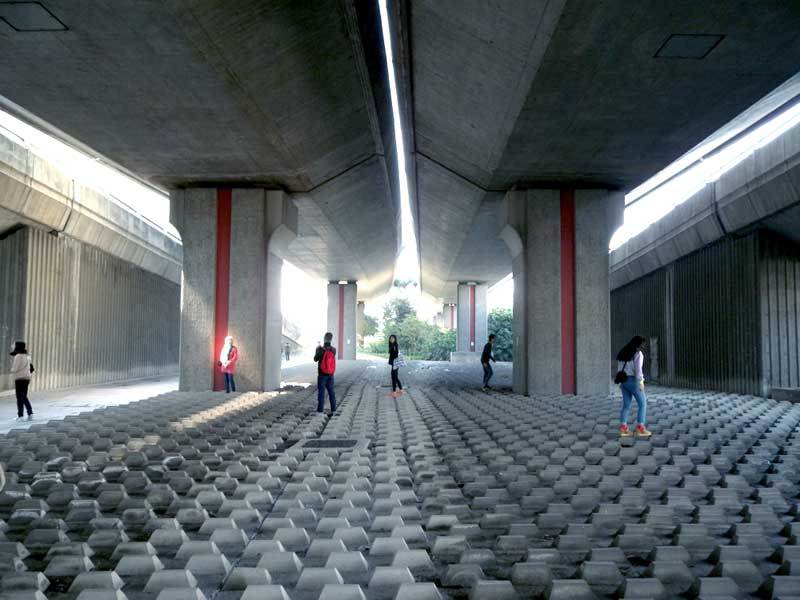
R
E
V N
E
X
T
Spring Workshop and “Moderation(s)”
The relentless march of Hong Kong’s art scene toward regional domination is, for many, a given. But, alongside the advent of the unfortunately titled “Art Basel in Hong Kong” this year, the influx of numerous flashy international galleries able to afford the city’s spiraling rents, and the much-anticipated opening of the M+ museum of visual culture in 2017, there is one recent arrival that may prove just as influential for the long-term art ecology of Hong Kong.
Nonprofits are thin on the ground here, and their square meterage tends to be minimal. However, opposite the filth of the new Wong Chuk Hang MTR station, currently under construction on the south of the island, there is a newcomer on a rather different scale. Housed on one floor of an imposing 1970s industrial building, the Remex Centre, are the immaculate white interiors of Spring Workshop, the brain child of its dynamic founder and director Mimi Brown.
With four working studios and two (currently rather dusty) terraces, and a total of 1,350 square meters, Spring had its soft opening in December 2011, since when its program has slowly gathered pace. An ambitious year-long “Moderation(s)” project began on January 10 under the beneficent gaze of Singaporean conceptualist and curator Heman Chong, organized in collaboration with Defne Ayas, the director of Rotterdam’s Witte de With—an institution with an impressive record in promoting national and international collaboration among artists, but an unbecoming lack of hesitation in announcing, among other similar assertions, that its “position in the cultural field is unique.”
With its aim of providing forums for untrammeled, joyful and cross-disciplinary experimentation, “Moderation(s)” kicks off with a month-long residence by Barcelona-based curatorial duo Latitudes (Max Andrews and Mariana Cánepa Luna) entitled Incidents of Travel, during which four Hong Kong-based artists (Nadim Abbas, Sin Tung Ho, Yuk King Tan and Samson Young) are leading day-long tours across the city, each of which is based on the artist’s work and engagement with environments encountered during its creation. These tours also aim to explore and erode boundaries between curation and practice.
Extending the collaborative (or “exchanging,” as Chong has it) mission of “Moderation(s),” there will be a fiction writing workshop in June, led by an “established fiction writer,” for 15 artists, curators and writers. In October, artist group A Constructed World will create “The Social Contract,” an exhibition at which audiences will sign legal contracts restraining them from speaking about what they have seen on display, exploring the withdrawal of speech as a productive element. In addition, Singaporean artist Michael Lee will develop a series of maps to trace the progress of the project. Related performances and exhibits will take place at Witte de With in Rotterdam over the course of the year.
Perhaps a result of multiple-author syndrome, there is a strange mixture of grandiose pronouncement and self-parody in the prose that accompanies the launch of “Moderation(s),” giving an unfortunate impression that its validity and virtue are beyond dispute—that this is a munificent, profound gift dropping from the heavens into Hong Kong’s untutored lap. Despite this lack of humility (imported, one might presume, from the Netherlands), the first tour resulting from Incidents of Travel—lead by Nadim Abbas and allowing unexpected perspectives on Hong Kong from the underside of the hectic Connaught Road bypass, the notoriously dense Man Cheong Street Housing Complex, or the layered fabric of the Waterfall Bay Park—did prove that the nonprofit environment has the potential for the unexpected moments of joy and discovery that Defne Ayas is searching for. This flagship program suggests that the ecology of Hong Kong’s art scene should benefit from both Spring’s existence, and also from its example.
John Jervis is managing editor of ArtAsiaPacific.



